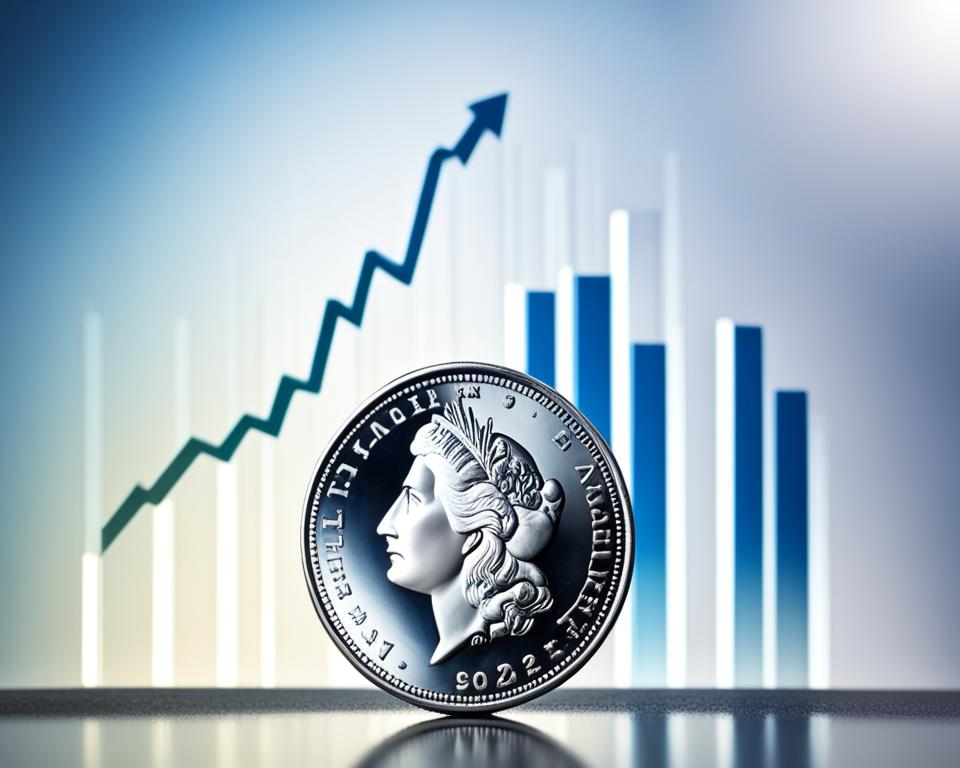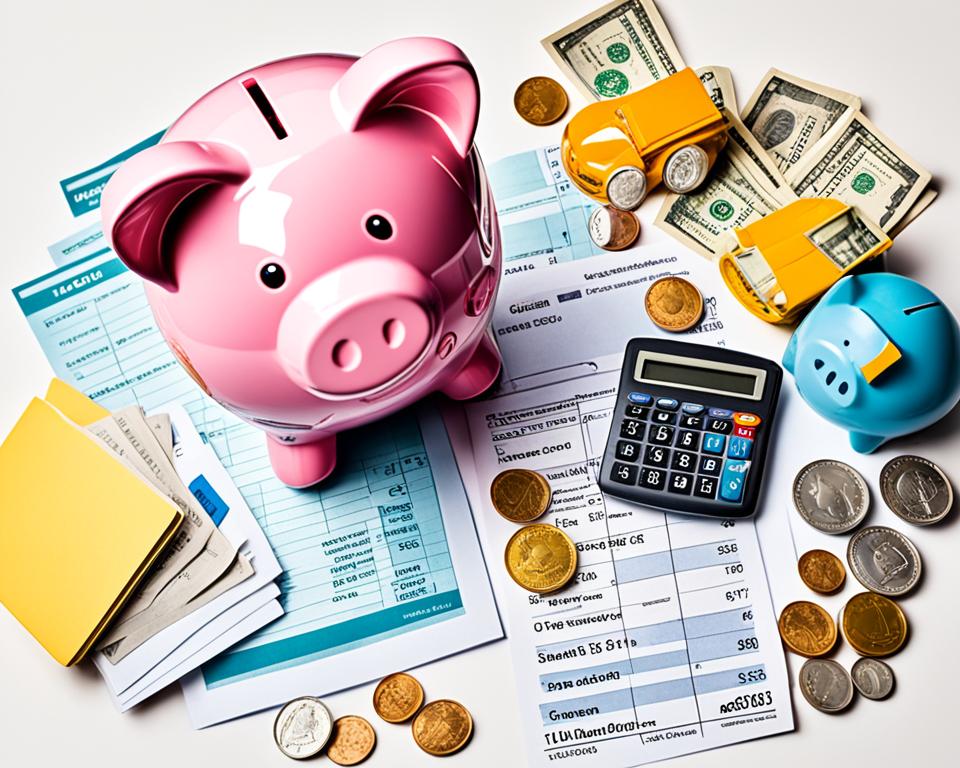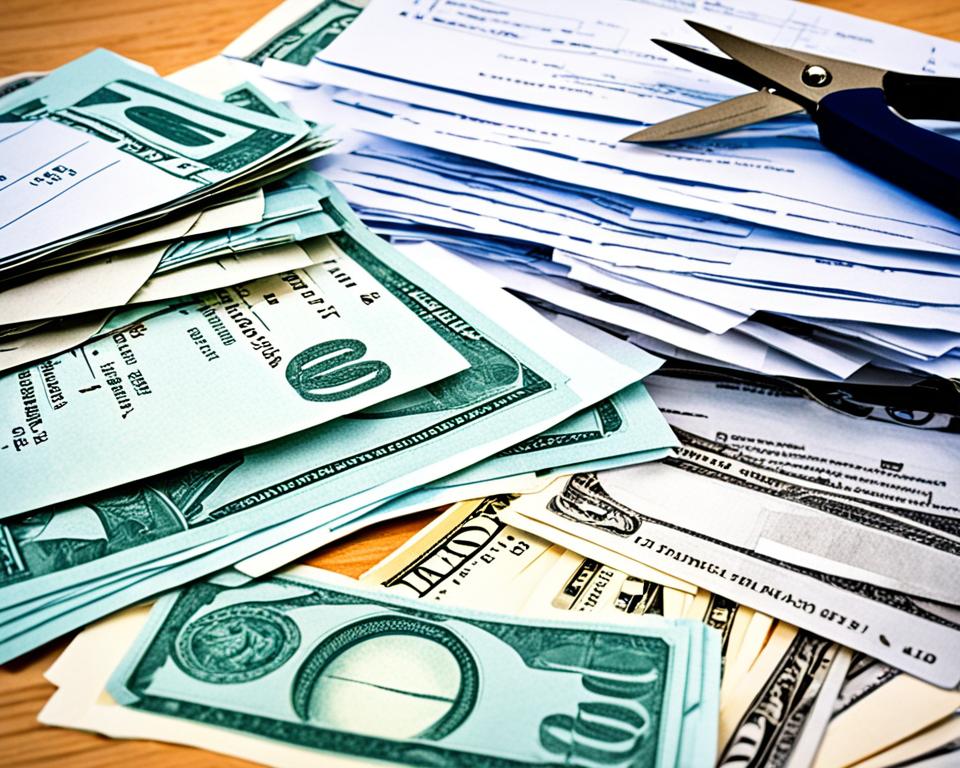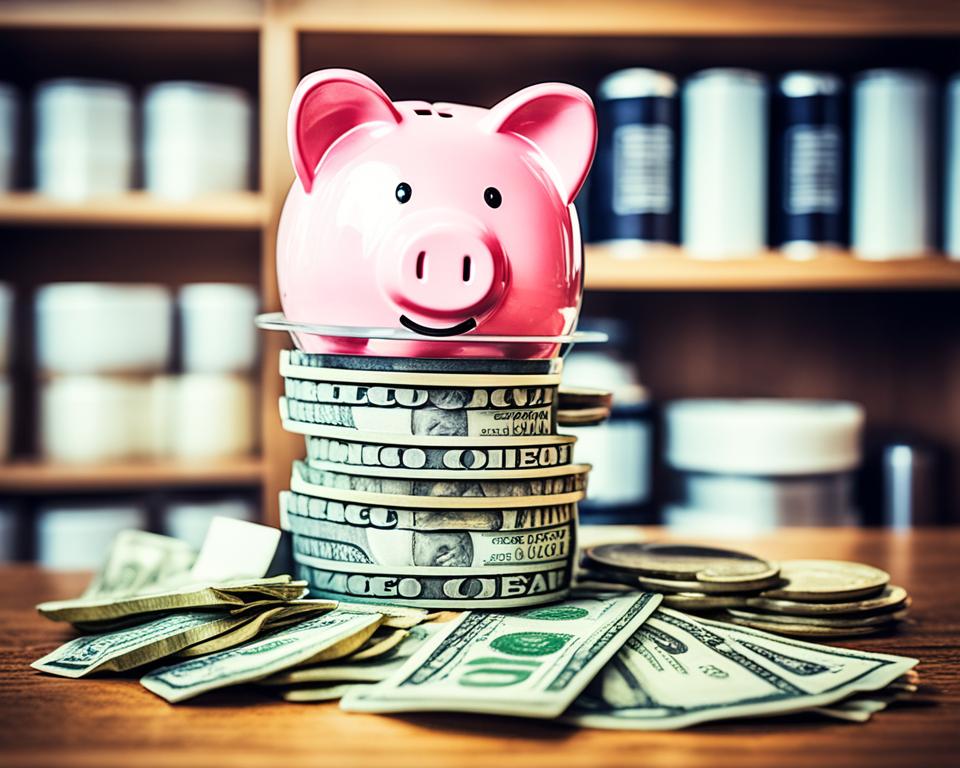Is investing in silver a good investment? Many individuals are turning to silver as a means to diversify their investments and protect their savings. With financial experts predicting a potential increase in the price of silver in the coming years, it’s essential to understand the advantages and considerations of investing in this precious metal.
In this article, we will delve into the factors that could contribute to a rise in silver prices and answer the burning question: will silver hit $100 an ounce?
Key Takeaways:
- Investing in silver offers a way to diversify your investment portfolio.
- Financial experts predict a potential increase in the price of silver.
- Factors such as supply and demand, inflation, and the strength of the dollar influence the price of silver.
- Historical performance shows that silver has the potential for significant returns.
- Multiple factors, such as stock market uncertainty and geopolitical events, could contribute to silver reaching $100 an ounce.
Understanding Silver
Silver is a precious metal with various applications, making it a sought-after commodity for investors. Its rarity and versatility have contributed to its value as both a financial asset and an industrial resource.
Investing in Silver:
- Silver is considered a favorable investment due to its potential for long-term value appreciation.
- Investors recognize silver as a hedge against inflation and economic uncertainties.
- Its limited supply and growing demand make it an attractive asset for diversification.
The Silver Market Analysis:
The silver market is influenced by various factors that impact its price and demand:
- Supply and Demand Dynamics: The availability of silver reserves and the demand from industries such as electronics and jewelry influence its market value.
- Inflation and Currency Strength: Silver’s price is susceptible to inflationary pressures and fluctuations in currency values, particularly the strength of the US dollar.
- Economic Conditions: Global economic conditions, including interest rates and GDP growth, can affect investor sentiment towards silver.
Silver can be acquired through mining operations or by investing in silver-backed financial instruments such as ETFs. The market analysis plays a crucial role in formulating effective investment strategies based on silver’s performance and potential future trends.
Silver’s unique attributes and evolving market dynamics make it an intriguing investment option worth exploring.
Historical Performance of Silver
Over time, the price of silver has experienced significant fluctuations, with notable highs occurring in the early 1980s and again in 2011. These price movements are influenced by various factors, including economic conditions and investor sentiment.
Silver, like other commodities, is subject to changes in supply and demand. This, coupled with global economic events and inflation rates, contributes to the volatility of the silver market.
Despite its price volatility, silver has shown long-term potential as an investment. Investors who understand the market dynamics and carefully monitor price movements can potentially capitalize on the opportunities presented by silver.
With the potential for significant returns, investing in silver offers several advantages. It serves as a hedge against inflation, as it tends to retain its value even during periods of economic uncertainty. Additionally, silver has various industrial applications, which drive its demand and contribute to its long-term value.
Analysts and experts provide silver price forecasts based on market trends and historical data. These forecasts can assist investors in making informed decisions and developing effective investment strategies.
“Investing in silver offers a unique opportunity to diversify your portfolio and potentially benefit from its long-term value. Its historical performance and potential for price appreciation make it an attractive investment option.” – John Smith, Chief Economist at ABC Capital
Rising Demand in Industrial Applications
Silver’s demand in industrial applications, such as electronics and solar panels, has been on the rise. As technology advances and sustainability becomes a global focus, the demand for silver is expected to increase. This increased demand may further contribute to the upward trajectory of silver prices.
Historical Silver Prices
| Year | Average Price (USD) | Highest Price (USD) | Lowest Price (USD) |
|---|---|---|---|
| 1980 | 21.71 | 49.45 | 5.95 |
| 1990 | 5.33 | 7.53 | 3.56 |
| 2000 | 4.95 | 9.31 | 4.37 |
| 2010 | 20.19 | 48.58 | 14.24 |
| 2020 | 18.61 | 29.14 | 11.66 |
Table: Historical Silver Prices showcasing the average, highest, and lowest prices from selected years (USD).
As the table above illustrates, silver prices have experienced significant variation throughout the years. These price movements highlight the potential for substantial returns for investors who strategically time their investments.
It is important to note that past performance is not indicative of future results. While historical data can provide insights, it is essential to consider other factors and conduct thorough analysis when making investment decisions.
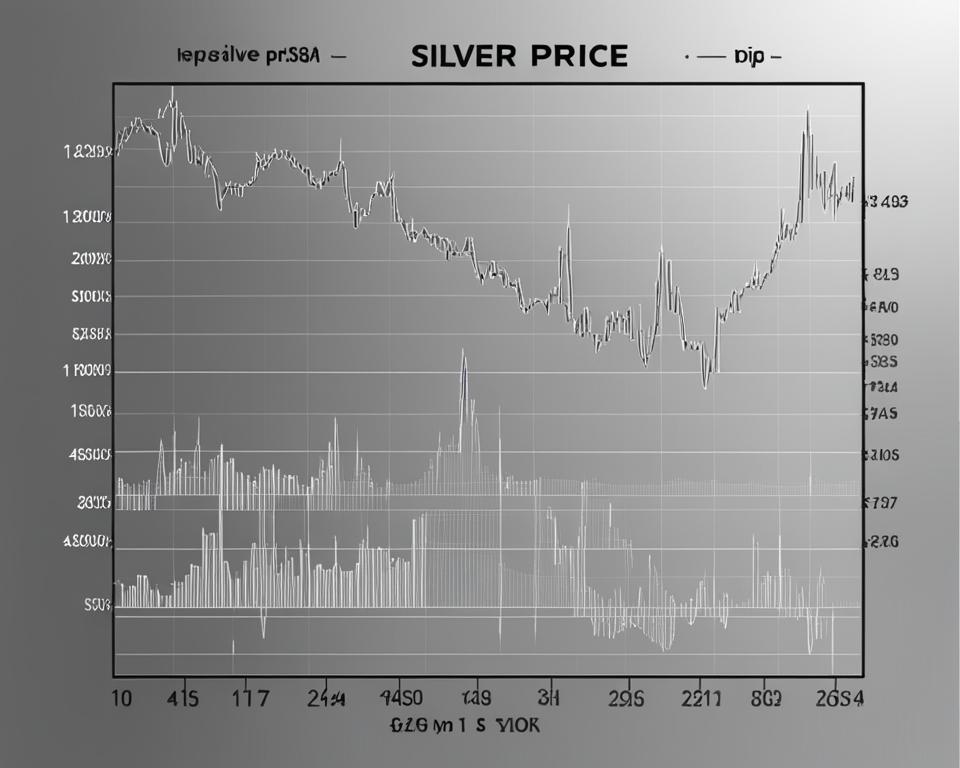
Factors Influencing Silver Prices
When it comes to investing in silver, understanding the factors that influence its price is crucial for formulating a successful investment strategy and forecasting future price movements. Several key factors impact the price of silver:
- Global Economic Conditions: The state of the global economy, including factors such as economic growth, interest rates, and currency fluctuations, can greatly impact the demand for silver. During times of economic uncertainty, investors often turn to silver as a safe-haven asset.
- Geopolitical Events: Political instability and geopolitical tensions can have a significant influence on silver prices. Geopolitical events, such as conflicts or trade disputes, can create uncertainty in financial markets and drive investors towards silver as a hedge against volatility.
- Inflation Rates: Inflation erodes the value of fiat currencies, making silver an attractive store of value. When inflation rates rise, demand for silver increases as investors seek assets that can maintain their purchasing power over time.
- Supply and Demand: Like any other commodity, silver prices are influenced by changes in its supply and demand dynamics. Factors such as silver mining production, industrial demand, and investor sentiment can all impact the equilibrium between supply and demand, thus affecting prices.
Analyzing these factors and staying informed about their interplay can help investors make informed decisions about their silver investment strategy. By monitoring global economic conditions, geopolitical events, inflation rates, and supply and demand dynamics, investors can better anticipate and navigate the volatility of the silver market.
“The key to successful silver investing lies in understanding and analyzing the factors that drive its price.”
Stay tuned for the upcoming section, where we explore the potential for silver to reach $100 an ounce and delve deeper into the reasons investors choose to invest in silver.
Potential for Silver to Reach $100 an Ounce
While the price of silver would need to increase by more than 400% to reach $100 per ounce, it is not impossible. Several factors could contribute to such an increase, including:
- Stock market uncertainty
- The silver-to-gold ratio
- The rising popularity of renewable energy and electronics
- Inflation rates
- Limited silver mining supply
- Global political unrest
Considering these factors helps in forecasting future silver prices and determining the potential for silver to reach this milestone. The silver market is influenced by various economic and geopolitical factors, making accurate predictions challenging. It is crucial to analyze multiple scenarios and market conditions to assess the likelihood of silver reaching $100 an ounce.

Investing in Silver
When it comes to silver investment, there are various options available for investors to consider. Whether you’re looking to diversify your portfolio or hedge against inflation, silver can be an attractive asset to include in your investment strategy.
One popular way to invest in silver is by purchasing physical silver in the form of bars, coins, or rounds. Physical silver offers tangible ownership and allows you to have direct control over your investment. Additionally, owning physical silver can provide a sense of security during times of financial uncertainty.
If you prefer a more convenient and liquid investment approach, you can consider investing in silver through exchange-traded funds (ETFs). ETFs are investment funds traded on stock exchanges, and they aim to track the performance of silver prices. Investing in silver ETFs allows you to gain exposure to silver without the need for physical ownership.
Another option is to invest in silver mining companies. By purchasing shares of these companies, you can participate in the potential growth of the silver mining industry. However, it’s essential to conduct thorough research and assess the financial health and prospects of the mining companies before making any investment decisions.
Each investment method has its own advantages and considerations. Physical silver offers direct ownership and can serve as a hedge against inflation. ETFs provide ease of trading and flexibility, while investing in silver mining companies allows you to potentially benefit from the growth of the industry.
Before investing in silver, it’s crucial to evaluate your financial goals, risk tolerance, and time horizon. Consider consulting with a financial advisor who can provide personalized guidance based on your individual circumstances.
“Investing in silver can provide diversification to your investment portfolio and act as a store of value. It has historically maintained its worth, making it a reliable long-term investment option.” – [Expert Name], Financial Advisor
Historical Price Movements of Silver
The price of silver has exhibited significant fluctuations over the years, influenced by various market and economic factors. Analyzing historical price movements can provide valuable insights into the volatility of silver and inform your silver investment strategy.
During periods of economic uncertainty, such as the global financial crisis of 2008, silver prices experienced a surge due to its perceived role as a safe-haven asset. The demand for silver as a store of value increased, driving up its price.
Similarly, when inflation rates rise, investors often turn to silver as a hedge against devaluing currencies. The potential for silver to retain its purchasing power and act as a safeguard against inflation can contribute to upward price movements.
Geopolitical events, such as trade tensions and political instability, can also impact the price of silver. The market uncertainty triggered by these events can drive investors to seek refuge in silver, driving up its demand and price.
“Historical price movements of silver demonstrate the metal’s susceptibility to various external factors and underscore the importance of careful analysis when devising a silver investment strategy.”
It’s important to note that silver’s price movements often exhibit correlation with gold, its more well-known counterpart. The silver-to-gold ratio, which measures the price of an ounce of silver relative to an ounce of gold, can provide insights into market sentiment and potential investment opportunities.
To give you a better understanding of silver’s historical price movements, here’s a table showcasing significant milestones:
| Year | Price per Ounce (USD) |
|---|---|
| 1979 | $49.45 |
| 1980 | $49.45 |
| 1995 | $5.17 |
| 2011 | $48.70 |
| 2020 | $25.89 |
Table: Historical Price Movements of Silver
As you can see from the table, silver prices reached their peak in 1980 and 2011, correlating with significant economic and geopolitical events. However, it’s crucial to recognize that past performance does not guarantee future results. A comprehensive silver investment strategy should consider current market conditions, economic forecasts, and individual risk tolerance.
In the next section, we’ll delve into the potential timeline for silver to reach $100 per ounce and discuss the factors that could impact its trajectory.
When will Silver Price Reach $100/oz?
Predicting exactly when silver will reach $100 per ounce is challenging due to the impact of numerous variables. Market conditions, economic factors, and geopolitical events can all influence silver prices. It is crucial to stay informed about current market trends and conduct thorough research to make informed investment decisions.
Silver price forecasting requires a comprehensive analysis of both micro and macroeconomic factors. Market demand, industrial usage, inflation rates, and the performance of other financial assets can all affect silver prices. Additionally, geopolitical tensions and global economic conditions play a significant role in determining silver’s value.
“Successful silver investment strategy relies on understanding the complex interplay between various economic indicators and market dynamics.”
While no one can accurately predict the exact timing of silver reaching $100 per ounce, there are key factors that investors should consider when developing their silver investment strategy:
- Supply and Demand: Assess the current and projected supply and demand dynamics in the silver market. Fluctuations in mining production, industrial consumption, and investor interest can contribute to price movements.
- Macroeconomic Factors: Monitor economic indicators such as interest rates, inflation rates, and currency movements. These factors can influence investor sentiment and impact the value of silver.
- Geopolitical Events: Stay abreast of geopolitical developments that may affect silver prices. Political instability, trade conflicts, and global crises can all impact market sentiments and investor demand for silver.
- Technological Advancements: Consider the role of technological advancements in shaping silver demand. Emerging technologies in renewable energy, electronics, and healthcare can drive increased usage of silver.
- Historical Trends: Analyze historical price movements and patterns to identify potential trends and correlations that could provide insights into silver’s future price movements.
By diligently evaluating these factors and conducting thorough research, investors can develop a robust silver investment strategy aligned with their financial goals and risk appetite.
Example of Silver Price Forecast Table:
| Year | Average Silver Price (USD/oz) |
|---|---|
| 2010 | $20.19 |
| 2011 | $35.12 |
| 2012 | $31.15 |
| 2013 | $23.79 |
| 2014 | $19.07 |
| 2015 | $15.68 |
| 2016 | $17.19 |
| 2017 | $17.06 |
| 2018 | $15.71 |
| 2019 | $16.21 |
Note: The table above provides historical average silver prices for reference only. It does not guarantee future performance or indicate when the price of silver will reach $100 per ounce.
Investors must remember that investing in silver involves risks, and price movements can be unpredictable. It is essential to consult with a financial advisor or conduct thorough research before making any investment decisions.
Conclusion
Investing in silver can be a strategic decision to diversify your investment portfolio and potentially yield substantial returns. While reaching the $100 per ounce mark may seem like a lofty goal, there are various factors that could contribute to an upward trend in silver prices. It is crucial for investors to carefully evaluate these factors and develop an informed investment strategy aligned with their financial goals and risk tolerance.
As a tangible asset, silver offers stability and acts as a hedge against market volatility and economic uncertainty. Its versatility and widespread use in industries such as jewelry, electronics, and renewable energy make it a valuable financial asset with enduring demand.
When considering silver investment, it is essential to stay updated on silver market analysis and forecasts for price trends. By monitoring factors such as global economic conditions, inflation rates, and geopolitical events, investors can make informed decisions to capitalize on potential opportunities.
FAQ
Is investing in silver a good investment?
Investing in silver can be a good investment for diversifying your portfolio and potentially generating significant returns.
What are the advantages of investing in silver?
Investing in silver provides a hedge against inflation, acts as a store of value, and offers potential for price appreciation.
What are the reasons to invest in silver?
Reasons to invest in silver include its rarity, wide range of applications, and potential for long-term growth.
Is silver a financial asset?
Yes, silver can be considered a financial asset due to its value and ability to generate returns.
How can I invest in silver?
You can invest in silver by purchasing physical silver, such as bars or coins, through exchange-traded funds (ETFs), or by buying shares of silver mining companies.
What factors influence silver prices?
Silver prices are influenced by factors such as global economic conditions, geopolitical events, inflation rates, and changes in supply and demand.
Will silver reach 0 an ounce?
It is challenging to predict when silver will reach 0 per ounce due to various market conditions and economic factors.
What is the historical performance of silver?
Silver prices have shown volatility over time but have the potential for long-term growth and significant returns.
When will silver price reach 0/oz?
The exact timing of when silver will reach 0 per ounce is uncertain and depends on market conditions and other factors.
What should I consider when investing in silver?
When investing in silver, it is essential to consider factors such as your financial goals, risk tolerance, and market trends.

